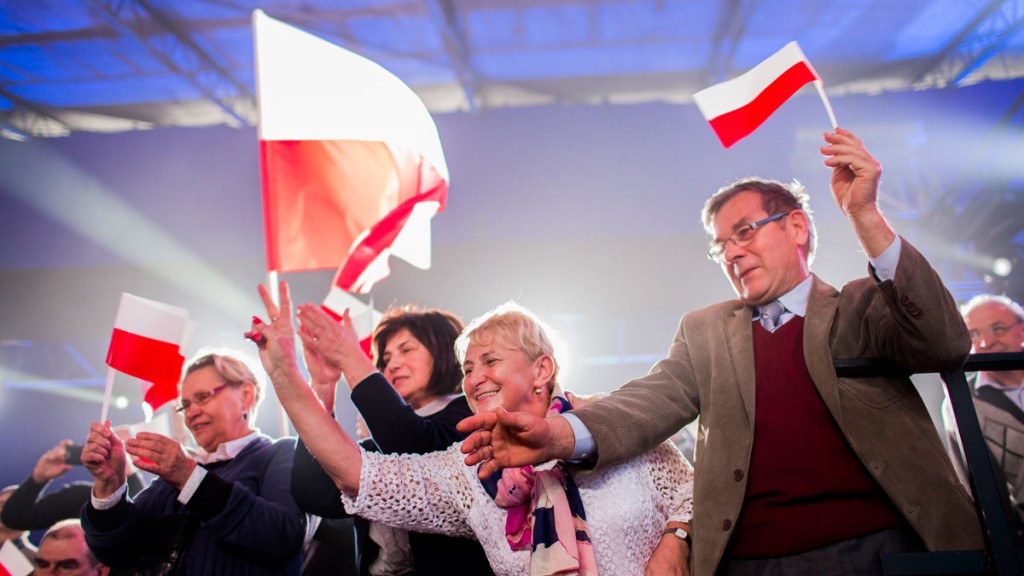
Not long ago, Poland was still “the darling of emerging markets”, says Shahzad Hasan of Allianz Global Investors. But he has “not been impressed” by recent developments, he told the FT. He’s not alone. Since the election of the Law and Justice party last October, one ETF tracking the stockmarket has lost a third of its assets. The currency has plummeted and the local WIG 20 index of blue-chip companies has lost over a fifth in the past year.
The new government “has developed a reputation for being populist, nationalist, and perhaps authoritarian”, says The Wall Street Journal’s Adam O’Neal. Democratic institutions are being “squeezed”: party functionaries now oversee the media and have the power to sack journalists. The European Commission has issued an unprecedented opinion saying the government is endangering the rule of law, adds Aliya Ram in the FT.
On the economic front, populist promises, including lowering the retirement age, money for families with more than one child, and raising the tax-free threshold on income tax, are the order of the day. All this is to be paid for by taxing bank assets, insurers and large retailers. Not coincidentally, these tend to have foreign owners, which has darkened the outlook for further foreign investment.
Poland had been a model of pro-market reforms and rapid development since the fall of Communism. It is Europe’s sixth-biggest economy, worth around $530bn, whose growth has easily outstripped the rest of the continent’s over the last ten years. But now it seems to be following the trail blazed by the self-proclaimed “illiberal democracy” of Hungary’s prime minister, Viktor Orban, says the FT’s Henry Foy.
Confidence took another knock this month when the deputy prime minister confirmed the government’s new nationalist economic policy in an interview entitled “Farewell to Neoliberalism”. It may be a long time before investors come back.
Peruvian stocks top global table
Peru’s new president, Pedro Pablo Kuczynski, “will inherit the… world’s hottest stockmarket”, says Dimitra DeFotis in Barron’s: Peruvian stocks have risen by 44% in dollar terms this year. And the outlook remains encouraging. The $200bn economy is set to grow by around 4% this year and next. Inflation has receded to an annual rate of 3.5%, providing scope for central-bank interest-rate cuts to bolster growth.
Foreign investment in gold and copper mining has allowed Peru to open two new mines this year. Over a decade of political stability and sensible fiscal and monetary policies has fuelled international confidence and underpinned this positive backdrop. Peru, concludes Joaquin Cottani of Standard & Poor’s Global, is “an economic success story”.
Dollar reaches a plateau
At the start of 2016, pretty much everyone thought the dollar would strengthen. It did the opposite. Now, May’s rebound in the US dollar index, which measures its progress against a basket of key trading partners’ currencies, appears to have run out of steam. And a rebound in the next few months seems unlikely.
“A Fed on hold takes away support for the dollar,” says Fiera Capital Corp’s Jonathan Lewis. The weak May jobs report has pushed back the central bank’s next interest-rate move. Instead of moving this summer, it may now even wait until November’s presidential election is over.
The gap between US and European or Japanese rates remains high, but this has surely been factored in by now. Moreover, the greenback’s strong run over the past few years – it gained 40% between 2008 and late 2015 – has tempered growth. That in turn has helped make markets more nervous about rate rises, so the Fed is now all the more cautious, as Ashmore Investment Management’s Jan Dehn told the FT. The upshot, reckons Dehn, is that the greenback has “reached a plateau”.